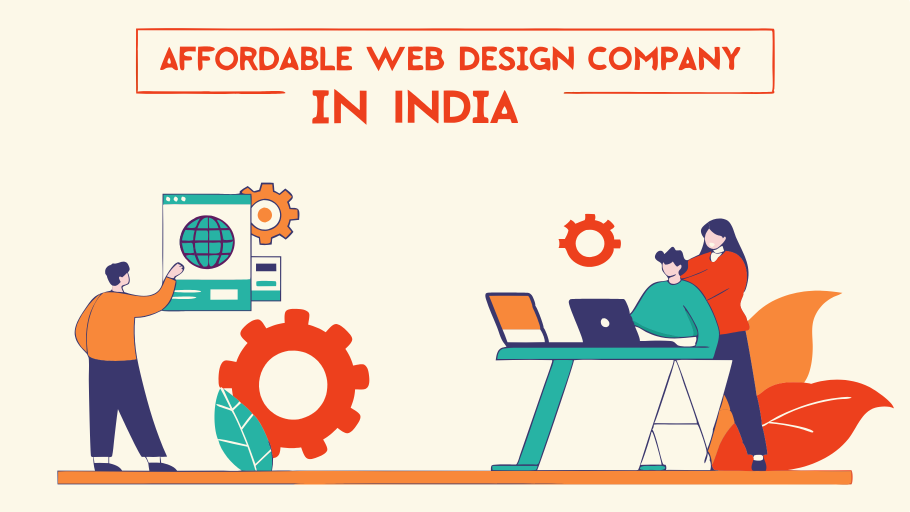In today’s digital landscape, choosing between a static and dynamic website can significantly impact your online presence. Whether you’re a business owner working with an affordable web design company in India or a developer starting a new project, understanding these two fundamental types of websites is crucial for making informed decisions.
What is a Static Website?
A static website consists of fixed content that remains the same for every user unless manually changed by the developer. Think of it as a digital brochure – what you see is what you get, regardless of who’s viewing it or when.
Characteristics of Static Websites:
- HTML files with fixed content
- Each page is a separate HTML document
- Content remains unchanged until manually updated
- Faster loading times
- Simple structure and straightforward development
- Limited functionality and interactivity
Best Uses for Static Websites:
- Personal portfolios
- Small business websites
- Documentation sites
- Landing pages
- Informational websites
- Event microsites
What is a Dynamic Website?
Dynamic websites generate content in real-time based on user interactions, database queries, or other variables. These websites can display different content to different users and offer interactive features.
Characteristics of Dynamic Websites:
- Content generated on-demand
- Database integration
- User-specific experiences
- Interactive features
- Regular content updates
- Complex functionality
Best Uses for Dynamic Websites:
- E-commerce platforms
- Social media networks
- News portals
- Online learning platforms
- Customer portals
- Content management systems
Key Differences Between Static and Dynamic Websites
1. Development Process
Static websites typically require simpler development processes. Many affordable web design companies in India specialize in creating static websites using basic HTML, CSS, and JavaScript. Dynamic websites, however, need more complex programming languages and frameworks like PHP, Python, or Ruby on Rails.
2. Content Management
Static Websites:
- Content updates require direct code modification
- Changes must be made page by page
- Developer intervention needed for updates
- Limited content management capabilities
Dynamic Websites:
- Content managed through CMS
- Easy updates without coding knowledge
- Automated content generation
- Flexible content management options
3. Performance and Loading Speed
Static Websites:
- Faster loading times
- Lower server resources required
- Better performance with limited content
- Excellent for small websites
Dynamic Websites:
- Slightly slower loading times
- Higher server resource usage
- Performance depends on database optimization
- Scalable for large websites
4. Cost and Maintenance
Static Websites:
- Lower initial development costs
- Minimal hosting requirements
- Simple maintenance
- Cost-effective for small businesses
Dynamic Websites:
- Higher development costs
- More expensive hosting needs
- Regular maintenance required
- Greater long-term flexibility
5. Security Considerations
Static Websites:
- Fewer security vulnerabilities
- Limited attack vectors
- Simpler security maintenance
- Lower risk of data breaches
Dynamic Websites:
- More potential security risks
- Regular security updates needed
- Database protection required
- Complex security measures
Making the Right Choice
Choosing between static and dynamic websites depends on several factors:
Project Requirements
- Content update frequency
- User interaction needs
- Functionality requirements
- Budget constraints
Business Goals
- Growth plans
- Target audience
- Marketing strategy
- Content management needs
Technical Considerations
- Available expertise
- Maintenance capabilities
- Hosting resources
- Security requirements
Q1: Which is more cost-effective – static or dynamic websites?
Static websites are generally more cost-effective for small businesses and simple projects. Many affordable web design company in India offer competitive packages for static website development. However, if your business requires complex functionality, a dynamic website might be more cost-effective in the long run.
Q2: Can I convert my static website to a dynamic website?
Yes, it’s possible to convert a static website to a dynamic one. However, this usually requires significant restructuring and development work. It’s often better to start with the right type of website based on your long-term needs.
Q3: Do static websites rank better in search engines?
Not necessarily. SEO success depends more on content quality, user experience, and proper optimization rather than whether the site is static or dynamic. Both types can achieve excellent SEO results when properly optimized.
Q4: Are dynamic websites less secure than static websites?
Dynamic websites typically have more potential security vulnerabilities due to their complex nature and database interactions. However, with proper security measures and regular updates, dynamic websites can be just as secure as static ones.
Q5: Which type is better for e-commerce?
Dynamic websites are generally better suited for e-commerce due to their ability to handle product databases, user accounts, shopping carts, and real-time inventory management. Static websites are limited in providing these essential e-commerce functionalities.
Conclusion
The choice between static and dynamic websites ultimately depends on your specific needs, resources, and goals. Static websites offer simplicity, cost-effectiveness, and faster loading times, making them ideal for small businesses and simple informational sites. Dynamic websites provide greater flexibility, functionality, and scalability, better serving complex business needs and interactive user experiences.
When working with an affordable web design company in India or any other development partner, consider your long-term business objectives, maintenance capabilities, and budget constraints. Remember that both types have their place in the digital landscape, and success depends on choosing the right solution for your specific situation.
Whether you opt for a static or dynamic website, ensure your choice aligns with your business goals and provides the best possible experience for your users. Regular maintenance, updates, and optimization will help maintain your website’s effectiveness regardless of the type you choose.

